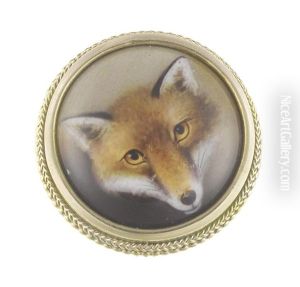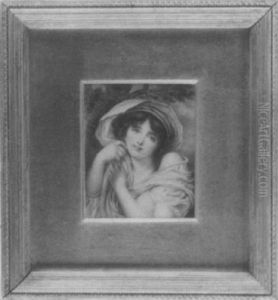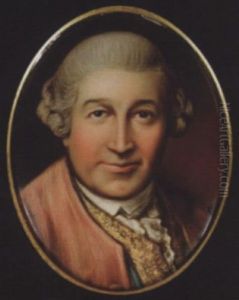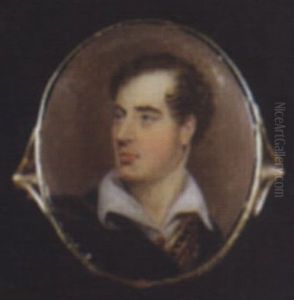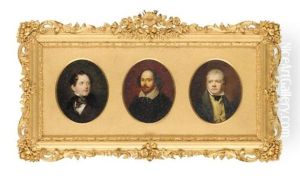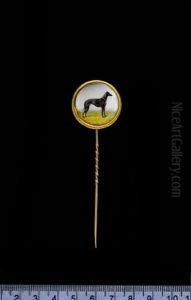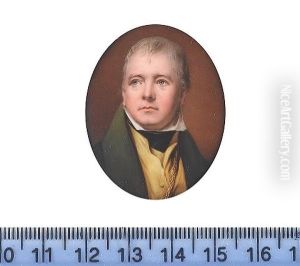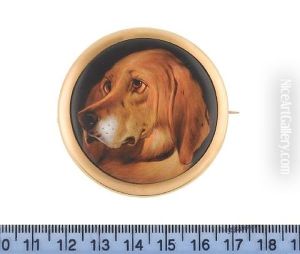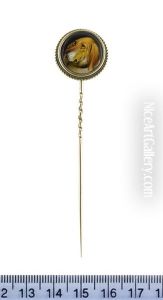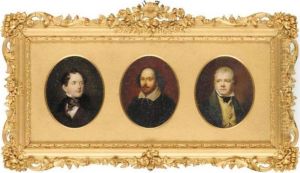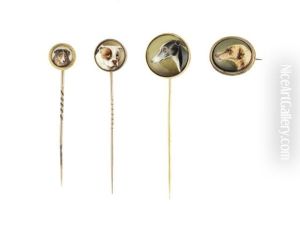William Bishop Ford Paintings
William Bishop Ford was an English sculptor and medalist born in 1832 in London, England. Ford's early life and education in the arts began with his apprenticeship under the notable British sculptor John Henry Foley, who was renowned for his public monuments and statues. Working with Foley provided Ford with a solid foundation in the traditional techniques of sculpture, and he would later become well-known for his own work in bas-relief, a form of shallow relief sculpture.
During the mid-19th century, Ford established himself as a competent artist, gaining recognition for his craftsmanship and artistic skill. He was particularly adept at creating portrait medallions, which were a popular art form during the Victorian era. These medallions often depicted figures from contemporary society, including politicians, members of the royal family, and other notable individuals.
Ford's work extended beyond medallions to larger sculptures and public monuments, which displayed a keen attention to detail and a classical sense of form and composition. Throughout his career, he exhibited at the Royal Academy, an institution that has been central to the art scene in Britain since its foundation in 1768. His works were also shown at the British Institution and the Royal Society of British Artists, reflecting his status within the art community of the time.
Despite his accomplishments, Ford did not gain the same level of fame as some of his contemporaries. Nevertheless, he was a respected figure among his peers, contributing to the rich tradition of British sculpture during the Victorian period. Ford's artistic legacy is composed of both his own creations and the influence he had on the generations of sculptors who followed.
William Bishop Ford continued to produce art well into his later years, with his career spanning several decades. He passed away in 1922, leaving behind a body of work that remains appreciated by art historians and collectors today. His sculptures and medallions can still be found in collections and museums, offering a glimpse into the aesthetic and cultural values of the Victorian era in which he lived and worked.
